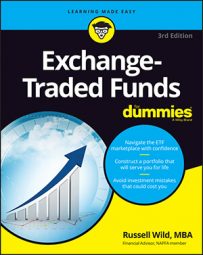In April 2006, the iShares Silver Trust (SLV) ETF was introduced. When you buy a share of SLV, you obtain virtual ownership of 10 ounces of silver. But, to say that silver is volatile is a gross understatement.
Silver is a volatile investment (thus so are silver ETFs)
In 1979, the price of an ounce of silver was about $5. It then rose tenfold in less than a year — to as high as $54 an ounce in 1980 — after the infamous Hunt brothers had cornered the silver market (until they were caught, because, y’know, it’s illegal to corner the market in just about anything). The price then fell again. Hard.
Fast forward to April 2011. The price of silver, having risen steadily and sharply since the introduction of the first silver ETF, had topped $48 an ounce and seemed headed back to the highs of 1980.
And then . . . pop! Within a mere several days, the price fell about 30 percent to slightly under $34. Then it rose back up in the following months to $42, and then, in September 2011 . . . pop! In a mere two days, it fell back down to $30.
If there is any reason to stomach such volatility, it stems from the fact that silver has a very low correlation to other investments. For the past three years, the price of silver has had very, very little correlation to stocks (except for some modest correlation to the stocks of silver-producing countries, such as Chile); almost no correlation to bonds; and even a decidedly limited correlation (0.75) to the price of gold.
If you must buy silver ETFs anyway. . .
If you’re going to take a position in silver, the iShares ETF is the way to go. The expense ratio of 0.50 percent will eat into your profits or magnify your losses, but it will still likely be cheaper than paying a commission to buy silver bars or coins and then paying for a good-sized lockbox.
In the very long run, you’re not likely to do as well with silver as you would with either stocks or bonds. Note, however, that unlike gold, silver has many industrial uses. Demand for silver can come from diverse sources — not just jewelers and collectors — which can cause the metal’s price to fluctuate with changing expectations for industrial production.
Because the uses for silver effectively “consume” the metal, the laws of supply and demand may influence the future prospects of silver prices in a way that doesn’t apply to gold. In the end, silver may prove useful as a hedge, maybe even better than gold.
But invest very modestly; no more than 5 percent of your portfolio should be allocated to precious metals. Keep in mind that the same strange tax law pertains to silver as to gold. Any capital gains will be taxed at the “collectibles” rate of 28 percent. You may want to keep your silver shares in a tax-advantaged account.

